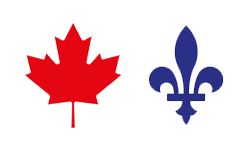A consumer proposal is a legal agreement between you and your creditors that allows you to settle your debts for less than you owe. However, not everyone is eligible.
What is a Consumer Proposal?
A consumer proposal is a formal agreement between you and your creditors that allows you to settle your debts for less than you owe. You work with a Licensed Insolvency Trustee (LIT) to create a proposal that outlines how much you can afford to pay your creditors over a set period. If your creditors accept the proposal, you’ll make payments to your LIT, who will distribute the funds to your creditors. Once you complete the proposal payments, your remaining debts are discharged.
Who Qualifies for a Consumer Proposal?
To qualify for a proposal, you must meet specific requirements. These include:
Residency
To file a consumer proposal, you must be an individual who resides, carries on business, or has property in Canada. This requirement ensures that the process is available to individuals who are part of the Canadian financial system.
Insolvency
Insolvency refers to your inability to meet your financial obligations. To qualify for a consumer proposal, you must demonstrate insolvency, which can be defined as ceasing to pay debts as they come due, being unable to pay debts as they come due, or having assets worth less than your unsecured debts. This requirement ensures that the consumer proposal is accessed by individuals facing significant financial challenges.
Debt Threshold
To file a consumer proposal, you must owe more than $1,000 and less than $250,000, excluding mortgage debt on your primary residence. The government sets this debt limit as an eligibility criterion. If your debts exceed this limit, you may need to explore alternative options such as filing a Division I proposal, which applies to larger debts.
Joint Consumer Proposal
In cases where multiple individuals share substantially similar debts, a joint consumer proposal can be filed. This option allows for a consolidated approach, providing an opportunity for a comprehensive resolution to financial challenges that affect multiple parties. It is important to consult with professionals to determine if a joint proposal is suitable for your specific situation.
Filing a Proposal while Bankrupt
It is possible to file a proposal even if you are currently bankrupt. However, it is important to note that the effective date would be the date of bankruptcy. This means that any debt incurred after the date of bankruptcy would not be eligible to be included in it. It is crucial to consider the timing and consult with professionals to make an informed decision that aligns with your financial goals.
Advantages of a Consumer Proposal
A proposal can be an excellent option for those struggling with debt. The benefits include:
Debt Relief
A consumer proposal allows you to settle your debts for less than you owe, which can provide a significant amount of debt relief. This can be especially helpful if you’re struggling to keep up with your debt payments and don’t see a way out of your financial situation. By settling your debts for less than you owe, you can reduce your debt load and gain some much-needed financial breathing room.
Protection from Creditors
Once your consumer proposal is accepted, you’re protected from your creditors. This means that your creditors can no longer take legal action against you or contact you for payment. This can be a huge relief for anyone who has been dealing with constant calls and letters from creditors, as it can help reduce the stress and anxiety associated with debt.
Reduced Monthly Payments
A consumer proposal allows you to make reduced monthly payments over a set period, making it easier to manage your debt. This can be a huge help if you’re struggling to keep up with your current debt payments and are finding it difficult to make ends meet. By reducing your monthly payments, you can free up some of your income to cover other essential expenses.
Avoid Bankruptcy
A consumer proposal is an alternative to bankruptcy, which can have significant financial consequences. Bankruptcy can impact your credit score for up to 7 years and may require you to sell off some of your assets to pay off your debts. By choosing a proposal instead, you can avoid these consequences and still gain some debt relief.
Negotiated Settlements
A consumer proposal is a negotiated settlement between you and your creditors, which means that your creditors are more likely to accept it than other debt relief options. This is because they know that they will receive some payment, whereas with other options, they may not receive anything at all. This can help you avoid the stress and uncertainty associated with negotiating with your creditors on your own.
Disadvantages of a Consumer Proposal
While a consumer proposal can be a helpful solution for those struggling with debt, there are also some disadvantages to consider. These include:
Effect on Credit Score
A consumer proposal will impact your credit score. It will remain on your credit report for three years after you complete the proposal.
Cost
Filing a consumer proposal incurs fees, including the expenses related to working with a Licensed Insolvency Trustee, which can be higher compared to the costs of a bankruptcy.
Potential Rejection
Your creditors may reject your proposal, which means you’ll need to explore other debt relief options.
If you’re struggling with debt, a proposal may be a helpful solution. If you’re considering a consumer proposal, it’s crucial to seek advice from a Licensed Insolvency Trustee to explore your options and determine the best solution for your financial situation. Remember, there is help available, and you don’t have to face your debt struggles alone.


